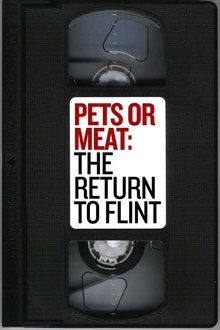Lowell Thomas travels across Europe and the Middle East on his way to attend the coronation of King Mahendra in Nepal.
Related Movies

The History of White People in America: Volume II (1986)
In this daring follow-up to The History of White People in America, comedian Martin Mull takes us on an in-depth look at such topics as White Religion, White Stress, White Politics, and White Crime.

Faces of Death III (1985)
The third installment of the infamous "is it real or fake?" mondo series sets its sights primarily on serial killers, with lengthy reenactments of police investigations of bodies being found in dumpsters, and a staged courtroom sequence.

Jackass 3.5 (2011)
Johnny Knoxville of 'Jackass' releases unused material of stunts, tricks, antics and shenanigans shot during the production of 'Jackass 3D' that didn't make it into the film, as well as the hilarious outtakes.
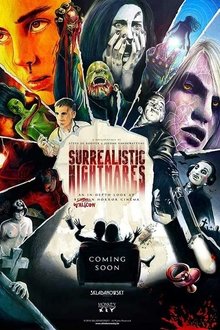
Surrealistic Nightmares: An In-Depth Look at Walloon Horror Cinema (2025)
After researching the Flemish horror cinema in "Forgotten Scares", director Steve De Roover - with the help of co-director Jérôme Vandewattyne (Spit'N'Split) - digs deeper in the follow-up documentary "Surrealistic Nightmares" and shows the beginning of Walloon horror cinema in the '20s (!) and how the genre evolved during the following years. Through unique experiences from the original cast and crew, horror experts and various genre journalists, a broad and in-depth picture is painted about the one-of-a-kind horror legacy from the French side of Belgium, without forgetting the difficult cinema landscape of this small country with two very different languages. "Surrealistic Nightmares: An In-depth Look at Walloon Horror Cinema" is illustrated by exclusive behind the scene footage, famous film scenes and loads of original promotional artwork.

Ecco (1963)
A documentary highlighting some of the oddest, strangest and more grotesque examples of human behavior. Included are a tour of the Grand Guignol theater in Paris, a man who sticks long needles through his body, reindeer being castrated, and footage of lesbians and strippers.
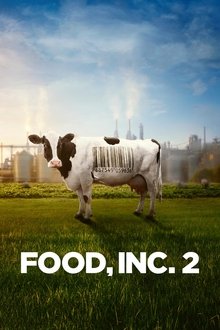
Food, Inc. 2 (2024)
Filmmakers Robert Kenner and Melissa Robledo reunite with investigative authors Michael Pollan and Eric Schlosser to take a fresh look at our efficient yet vulnerable food system.
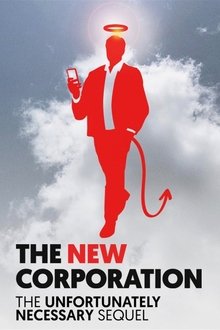
The New Corporation: The Unfortunately Necessary Sequel (2020)
Two decades after the initial exposé of the corporation, this follow-up unveils a world now fully remade in its image and perilously close to fascism.
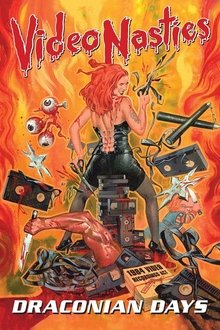
Video Nasties: Draconian Days (2014)
The highly anticipated follow-up to their critically acclaimed VIDEO NASTIES: MORAL PANIC, CENSORSHIP & VIDEOTAPE documentary, director Jake West and producer Marc Morris continue uncovering the shocking story of home entertainment post the 1984 Video Recordings Act. A time when Britain plunged into a new Dark Age of the most restrictive censorship, where the horror movie became the bloody eviscerated victim of continuing dread created by self-aggrandizing moral guardians. With passionate and entertaining interviews from the people who lived through it and more jaw dropping archive footage, get ready to reflect and rejoice the passing of a landmark era.
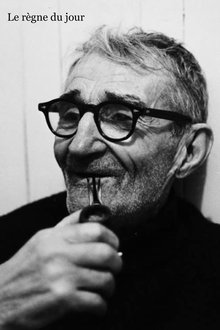
The Times That Are (1967)
Four years after Pour la suite du monde (1963), director Pierre Perrault asks Alexis Tremblay if he'll agree to travel with his wife Marie to the country of their ancestors, France. In a montage parallel, we follow them in France and listen to them talking to their friends about it.
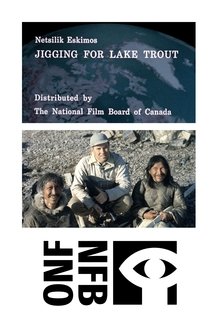
Netsilik Eskimos, VIII: Jigging for Lake Trout (1967)
More signs of winter's end as more wildlife returns. The family makes an excursion for fresh fish from a lake. They build a karmak and move in the furs, cooking troughs, etc. The woman sets up her lamp, spreads the furs and attends to the children. There are signs of returning wildlife. The man moves out on the lake ice and chips a hole for fishing. He baits his hook and lowers it jigging the line to attract the fish. Crouched by the hole, he persists with his purpose and takes some fish, as does his wife who has joined him. Both remain at the hole through a severe blizzard. Please note that this is an archival film that makes use of the word “Eskimo,” an outdated and offensive term. While the origin of the word is a matter of some contention, it is no longer used in Canada. This film is therefore a time capsule of a bygone era, presented in its original version. The NFB apologizes for the offence caused.
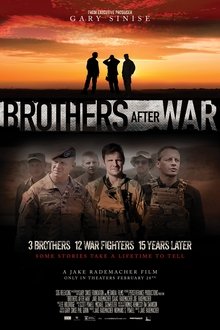
Brothers After War (2025)
Jake Rademacher reconnects with his brothers and soldiers he embedded with in Iraq. He creates a unique “then and now” journey into the toll of war and a never before seen look at war fighters and the veterans they become.
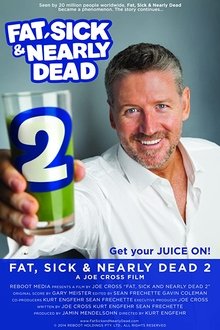
Fat, Sick & Nearly Dead 2 (2014)
Joe Cross took viewers on his journey from overweight and sick to healthy and fit via a 60-day juice fast in the award-winning Fat Sick and Nearly Dead. With Fat, Sick & Nearly Dead 2, he looks at keeping healthy habits long-term.

Netsilik Eskimos, IV: Group Hunting on the Spring Ice (1967)
Late June, and much of the land is bare. There are sounds of running water, and melt ponds shine everywhere. The woman carries heather and moss to camp and the man makes a whirling bullroarer for the boy. Another child pretends to drive a dog sled. A woman is working sinews into bowstrings, while another is busy with a seal skin. A woman prepares to cook a meal and a man makes a bow from bone and sinews. It is a demanding task to combine such materials into a strong supple weapon; the result is pleasing to the man. The next day the men move out on the sea ice with a dog to look for seal pups.

Gallows Humour: Inside 'The Horror of Frankenstein' (2018)
A series of interviews between film historians Jonathan Rigby, Kevin Lyons, John J. Johnston and several others that tracks the events which led to the making of the film The Horror of Frankenstein and the state of the Hammer studio at the time.

Netsilik Eskimos, IX: Stalking Seal on the Spring Ice (1967)
The family is on the shore of Pelly Bay in May-June. A seal basks beside its hole under a warming sun. The hunter stalks the seal, kills it and drags it to the family camp on shore. Man and wife skin the seal, cutting the hide into rings that girdle the body. Stripped of blubber, the rings are then cut spirally into long thongs. The boy plays on the shingle imitating the circling gulls, while the man stretches his thongs between rocks and scrapes away the fur. The woman dresses the seal, wasting nothing, braiding the intestines.

Netsilik Eskimos, VII: Fishing at the Stone Weir (1967)
Full summer, and the tundra is bare; skin tents are up and it is time to attend to the fishing as the fish move upstream. The men are in the river, lifting stones and placing them to form enclosures to trap the fish. A woman skins a duck and then braids her hair in the old way, stiffly around sticks. From a bladder she makes a balloon for the child. The men are fishing with the three-pronged leisters, spearing the fish and stringing them on a thong, until it is as much as a man can do to drag his catch from the water. The woman works quickly, cleaning the fish, and then all enjoy bits of the fresh raw fish.

Netsilik Eskimo Series, II: At the Caribou Crossing Place (1967)
The time is early autumn. The woman wakes and dresses the boy. He practices with his sling while she spreads a caribou skin to dry. The boy picks berries and then the men come in their kayak with another caribou. This is skinned, and soon night falls. In the morning, one man leaves with his bow while the other makes a fishing mannick, a bait of caribou meat. The woman works at the skins, this time cleaning sinews and hanging them to dry. The man repairs his arrows and then sets a snare for a gull. The child stones the snared gull and then plays hunter, using some antlers for a target. His father makes him a spinning top. Two men arrive at the camp and the four build from stones a long row of manlike figures, inukshult, down toward the water. They wait for caribou and then chase them toward the stone figures and so into the water where other men in kayaks spear them. The dead animals are floated ashore and skinned.
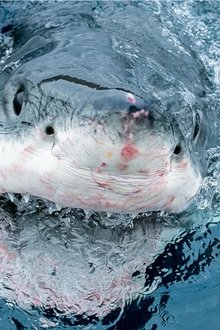
Super Predator (2015)
Wildlife filmmaker Dave Riggs has spent eleven years trying to find out who this super predator capable of eating a Great White is. Dave’s obsession to find the killer leads him to an oceanic battle zone that's remained hidden until now. Called the kill zone, orcas, colossal squids, and Great White Sharks face off in an underwater battle where only the fiercest creatures of the marine world survive.

Netsilik Eskimo Series, III: At the Spring Sea Ice Camp (1967)
Two Eskimo families travel across the wide sea ice. Before night falls they build small igloos and we see the construction in detail. The next day a polar bear is seen basking in the warming sun. A woman lights her seal oil lamp, carefully forming the wick from moss. The man repairs his snow goggles. Another man arrives dragging a polar bear skin. The boy has made a bear-shaped figure from snow and practices throwing his spear. Then he tries his bow. Now, with her teeth, the woman crimps the sole of a sealskin boot she is making. The men are hunting seal through the sea-ice in the bleak windy weather. The wind disturbs the "tell-tales," made of eider down or a hair loop on a bone, that signal when a seal rises to breathe. A hunter strikes, kills and drags his catch up and away. At the igloo the woman scrapes at a polar bear skin and a man repairs a sled. In the warming weather the igloo is topped with furs and a snow shelter is built to hide the sled from the sun.
